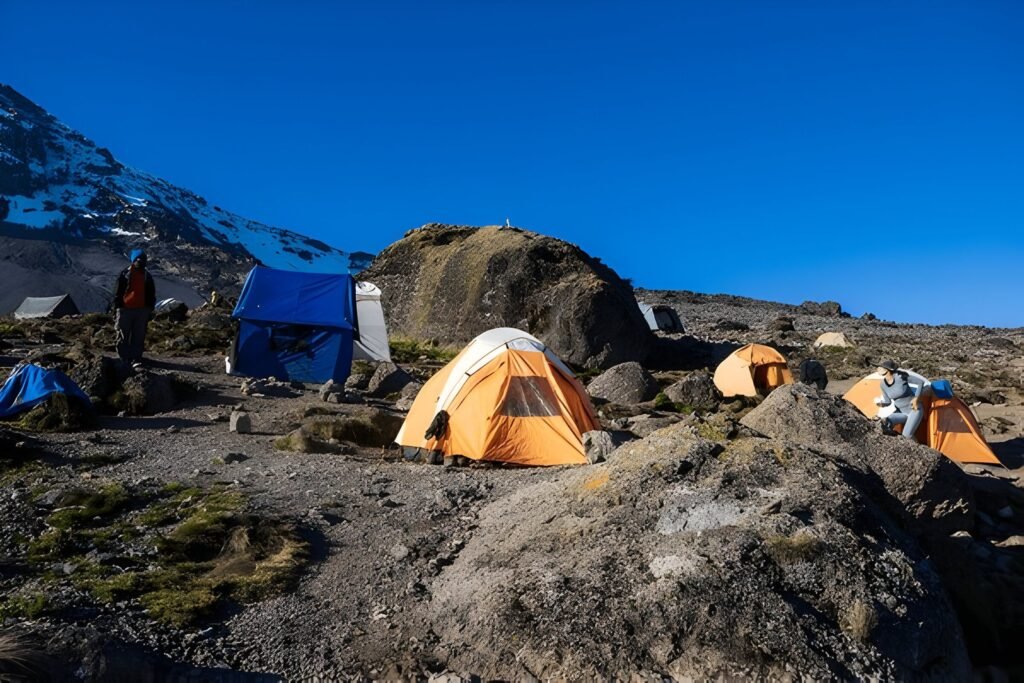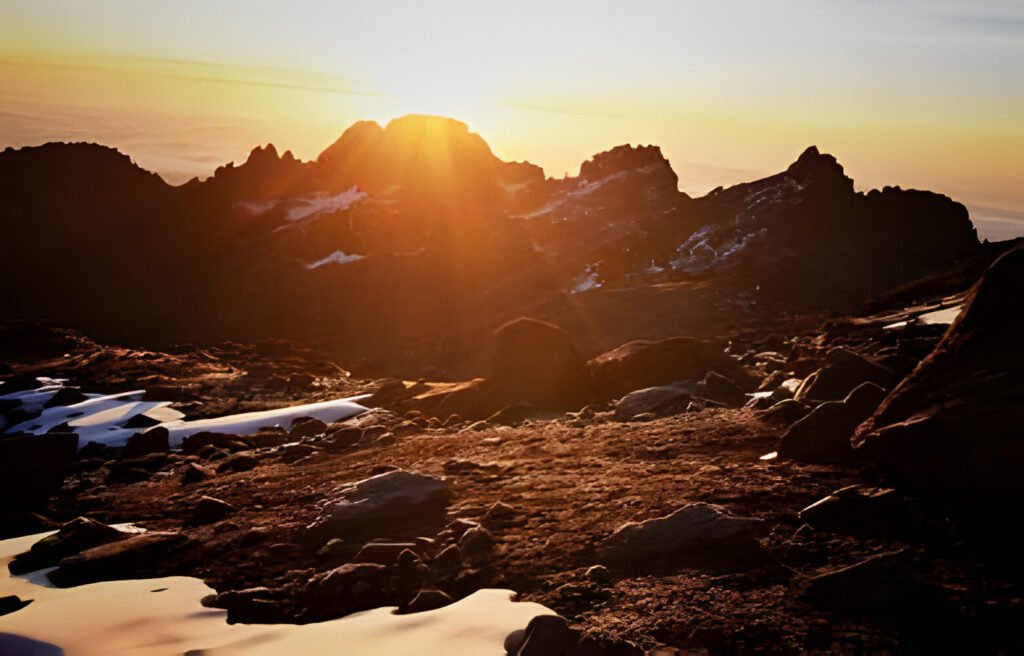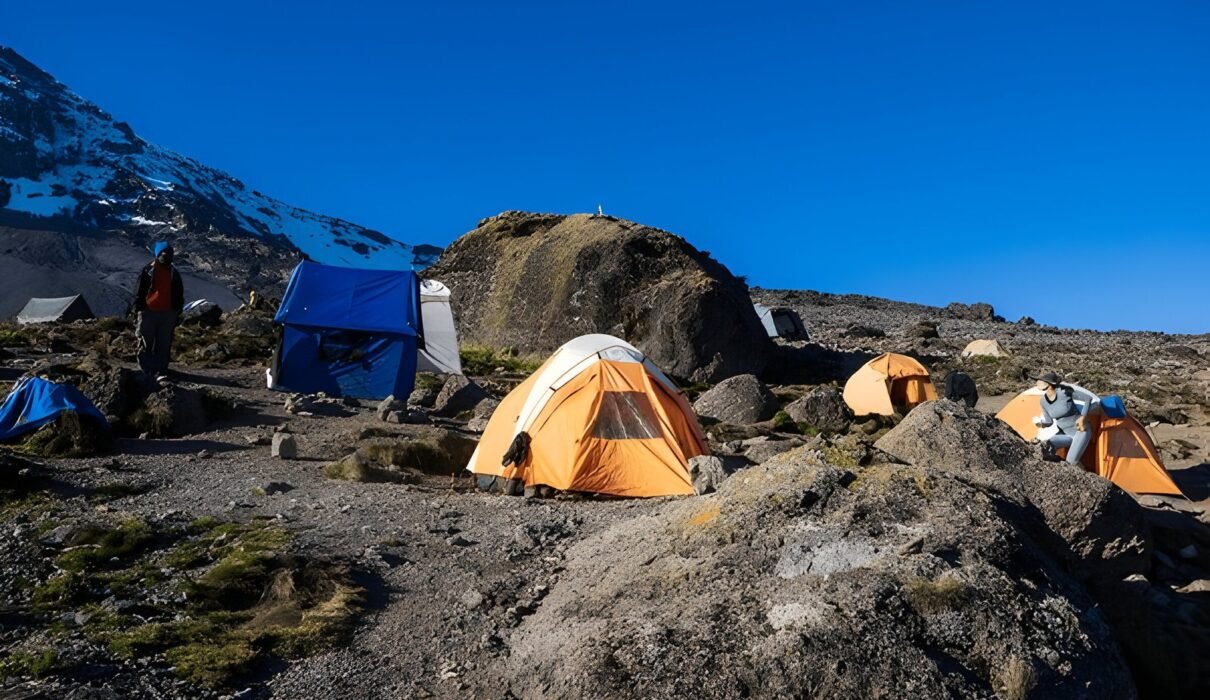Kilimanjaro Machame Route Packages: Best 6-Day and 7-Day Options is one of the most popular and scenic routes to the summit of Mount Kilimanjaro, and for good reason. This route, often referred to as the “Whiskey Route,” offers a challenging yet rewarding climb, with plenty of time for acclimatization and awe-inspiring views along the way. Whether you opt for a 6-day or 7-day package, the Machame Route is ideal for adventurers seeking a diverse and scenic trekking experience with a high summit success rate.
This article covers the best Kilimanjaro Machame Route packages available in both 6-day and 7-day options, along with the key highlights, route details, and expert tips to ensure your adventure is safe, enjoyable, and successful.

Kilimanjaro Machame Route Packages: Best 6-Day and 7-Day Options : Why Choose the Machame Route?
The Machame Route stands out for several reasons, making it one of the top choices for climbers:
1. High Success Rate
With an 85% success rate on the 7-day package, the Machame Route gives climbers ample time to acclimatize, which is key to reaching the summit of Uhuru Peak at 5,895 meters. The longer 7-day option is recommended for those who want to minimize the risk of altitude sickness.
Learn more about altitude sickness and acclimatization in this guide from WebMD.
2. Stunning and Diverse Scenery
One of the biggest advantages of the Machame Route is the varied landscape you’ll traverse. From lush rainforests to alpine deserts and glaciers, the Machame Route offers unparalleled diversity, making each day of the trek a unique experience.
- Rainforest Zone: Trek through the vibrant, dense forest full of wildlife, including monkeys and exotic birds.
- Moorland Zone: Enjoy breathtaking views of the Shira Plateau with its dramatic volcanic rock formations.
- Alpine Desert: A barren but beautiful part of the trek, with stunning views of Kibo Peak.
- Glacier Zone: The final ascent brings you through icy, high-altitude terrain with views of Kilimanjaro’s iconic glaciers.
To learn more about the diverse ecosystems of Kilimanjaro, check out this National Geographic feature on Kilimanjaro.
3. Perfect for Acclimatization
The Machame Route follows the “climb high, sleep low” principle, allowing for better acclimatization. This is crucial in avoiding altitude sickness and ensuring a successful climb.
Find out more about the importance of acclimatization in this article from The Altitude Research Center.
Machame Route: Best 6-Day and 7-Day Options
6-Day Machame Route Package
The 6-day Machame Route package is a popular choice for climbers who are confident in their ability to acclimatize quickly. This option condenses the trek into fewer days, making it a bit more challenging, but still providing the incredible scenic experience Kilimanjaro is famous for.
Kilimanjaro Machame Route Packages: Best 6-Day and 7-Day Options / Itinerary Overview
- Day 1: Machame Gate to Machame Camp
Trek through the lush rainforest as you gain 1,200 meters in altitude. - Day 2: Machame Camp to Shira Camp
Climb through moorlands, crossing rocky ridges and volcanic formations. - Day 3: Shira Camp to Barranco Camp via Lava Tower
Ascend to Lava Tower (4,600 meters) before descending to Barranco for a good night’s rest. - Day 4: Barranco Camp to Barafu Camp
Pass the infamous Barranco Wall, a steep but non-technical climb with stunning views. - Day 5: Barafu Camp to Uhuru Peak, then to Mweka Camp
Summit day begins at midnight. Reach Uhuru Peak in the early morning, then descend to Mweka Camp. - Day 6: Mweka Camp to Mweka Gate
Complete your descent, celebrating your success with your team before returning to Moshi.
For more tips on how to prepare for a Kilimanjaro trek, visit Harvard Health’s guide to hiking at high altitudes.
7-Day Machame Route Package
The 7-day Machame Route package is recommended for those who want to increase their chances of reaching the summit. The extra day gives climbers more time to acclimatize, especially around Karanga Camp, which significantly boosts summit success rates.
Itinerary Overview:
- Day 1: Machame Gate to Machame Camp
Begin your ascent through the rainforest, gaining altitude steadily. - Day 2: Machame Camp to Shira Camp
Cross the Shira Plateau, enjoying the vast open landscapes. - Day 3: Shira Camp to Barranco Camp via Lava Tower
The gradual ascent helps your body adjust to higher altitudes before descending for a restful night. - Day 4: Barranco Camp to Karanga Camp
A relatively short day to aid with acclimatization, making this a perfect rest day before the summit push. - Day 5: Karanga Camp to Barafu Camp
Trek through the alpine desert as you prepare for summit night. - Day 6: Barafu Camp to Uhuru Peak, then to Mweka Camp
Begin your midnight ascent to Uhuru Peak, the highest point in Africa, followed by a descent to Mweka Camp. - Day 7: Mweka Camp to Mweka Gate
Finish your adventure with a descent to the gate, where you’ll receive your certificate of achievement.
Learn more about why acclimatization is essential for a successful climb on Mount Kilimanjaro.
Kilimanjaro Machame Route Packages: Best 6-Day and 7-Day Options What’s Included ?
Both the 6-day and 7-day Machame Route packages include everything you need for a successful climb. Here’s what’s typically covered:
- Expert Guides and Porters
Highly trained, local guides with extensive experience on Kilimanjaro. - Meals and Water
Freshly prepared meals and plenty of water to keep you hydrated during the trek. - Camping Equipment
Quality tents, sleeping pads, and dining equipment for a comfortable night’s sleep. - Park Fees and Permits
All required permits and conservation fees for Kilimanjaro National Park. - Transportation
Transfers from Moshi to Machame Gate and back, with comfortable vehicles. - Safety Equipment
Oxygen tanks, first aid kits, and health monitoring tools to ensure your safety at high altitudes.
For a complete checklist of what to pack for your Kilimanjaro climb, visit The Mountaineers’ guide.
Kilimanjaro Machame Route Packages: Best 6-Day and 7-Day Options / Preparing for Your Machame Route Climb
1. Physical Fitness
Climbing Kilimanjaro requires good physical fitness. To prepare, focus on cardio exercises, strength training, and hiking with a weighted backpack. This will help build the endurance needed for long days of trekking at high altitudes.
Check out this guide on hiking fitness tips to get ready for your Kilimanjaro adventure.
2. Mental Preparation
Mental endurance is just as important as physical fitness. Summit night is particularly challenging, so keeping a positive attitude and staying focused on your goal is crucial.
3. Gear and Equipment
Be sure to pack appropriately for both warm and cold weather. Here are some essentials:
- Sturdy, waterproof hiking boots (well-broken in)
- Thermal clothing layers
- Waterproof jacket and pants
- Headlamp for summit night
- Sunglasses and sunscreen for high-altitude sun exposure
For a full Kilimanjaro packing list, check out The Ultimate Kilimanjaro Guide.

Kilimanjaro Machame Route Packages: Best 6-Day and 7-Day Options / Frequently Asked Questions (FAQs)
1. How hard is the Machame Route?
The Machame Route is considered a moderately challenging trek. It doesn’t require technical climbing skills, but climbers need to be fit and prepared for long days of trekking at high altitudes.
2. What is the success rate of the Machame Route?
The success rate for the 7-day Machame Route is approximately 85%, while the 6-day option has a slightly lower success rate due to less time for acclimatization.
3. Do I need technical climbing experience?
No, Kilimanjaro is a non-technical climb. However, it’s important to be physically fit and mentally prepared for the trek.
4. What’s the best time to climb Kilimanjaro?
The best times to climb Kilimanjaro are during the dry seasons: January to March and June to October. These months provide more stable weather conditions and clearer skies.
5. Can I join a group if I’m traveling solo?
Yes! Many solo travelers join group climbs, which is a great way to meet new people and share the experience.
Kilimanjaro Machame Route Packages: Best 6-Day and 7-Day Options conclusion
For more information or to book your Kilimanjaro Machame Route Package, visit Kilimanjaro Climb Specialist and Eddy Tours & Safaris.

